Kanazawa City, Ishikawa Prefecture.
There is a group of creators that are based in Kanazawa. The group is called secca (meaning “snow flower”) and they are led by Tatsuya Uemachi and Yuichi Yanai.
They use traditional techniques and the latest technologies, including digital tools and new materials, to create art and products that invite us to explore the “unknown.”
Another characteristic of secca is that the group collaborates with creators from all fields, including top chefs and musicians in Japan and other countries, and at times with other traditional craftsman or industrial companies.
In this article we introduce their worldview and their process of creating experiences of the “unknown.”
A dining experience previewing the future
Tableware is one of the products that showcases secca’s style well.
LandscapeWare was designed under the concept of tableware as part of a landscape, with cuisine presentation starting with the tableware, rather than the food itself.

Uemachi explains, “The reason we make tableware is because of our fundamental desire to approach innovation of food culture in a new way. We want to assist chefs in realizing the dining experience that they aim to create. From the standpoint of producing tableware, we aim to do something that moves the clock forward slightly for food culture.”
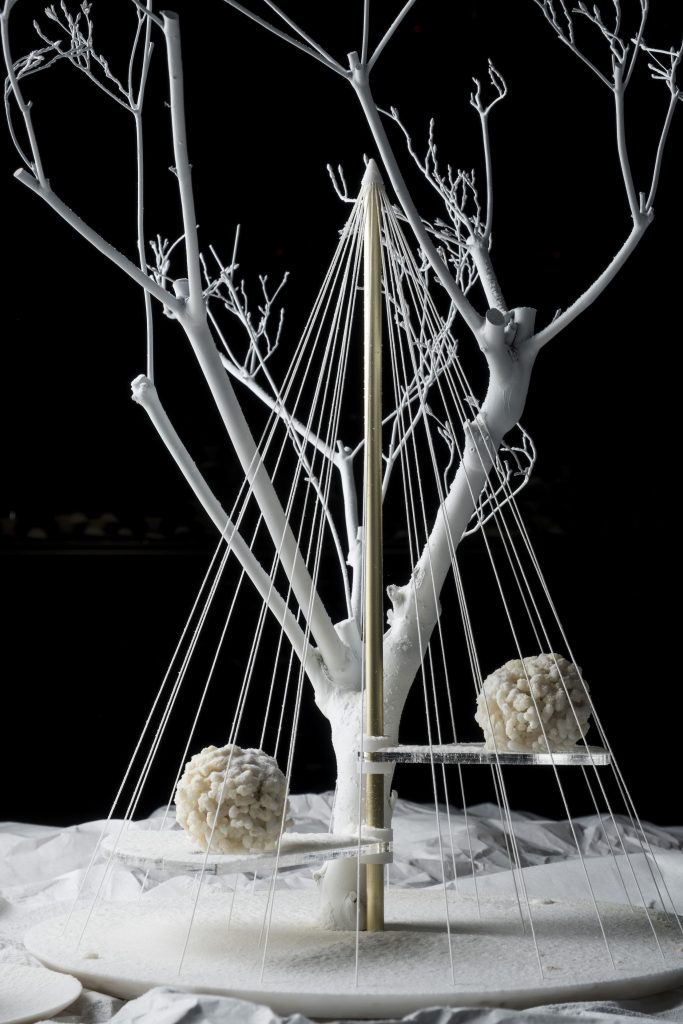
One example is their collaboration with two Michelin star restaurant Taiwanese chef, André Chiang. The tableware they presented in January 2020 broke away from preconceived notions of food.
The unique sensibility and beauty expressed in their presentation, which included dishes that replicated scenery of a winter tradition in Kanazawa called “snow suspension,” where ropes are used to protect tree branches from heavy snow, rainy landscapes that are unique to the Hokuriku region, and dishes made to look like kintsugi, a traditional craft that uses gold to fix broken pottery. These presentations created an unprecedented dining experience that received critical acclaim.
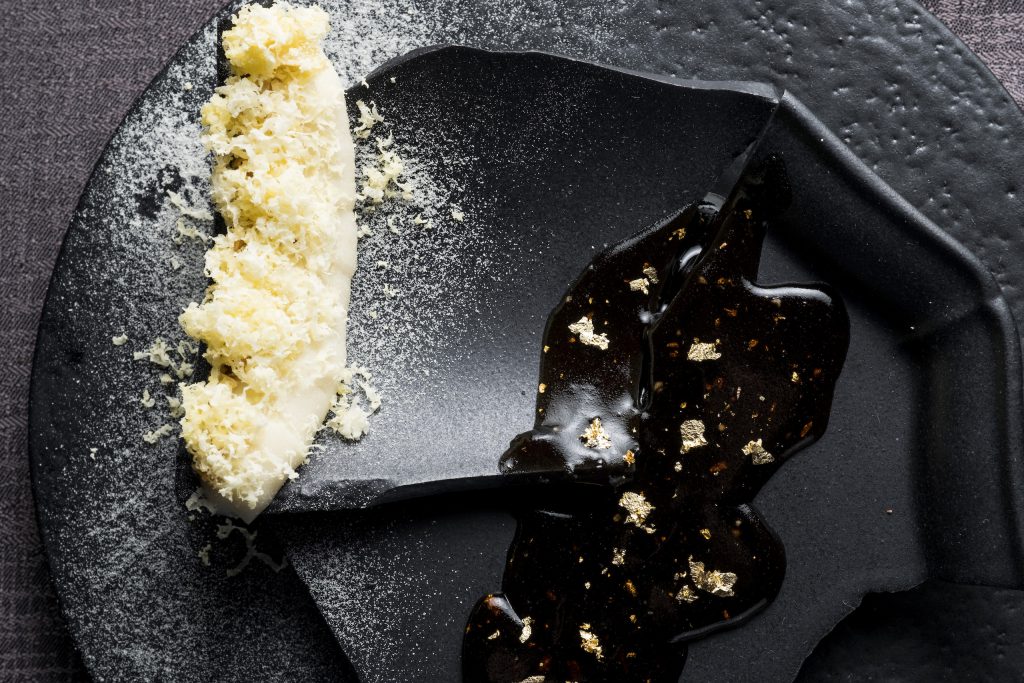
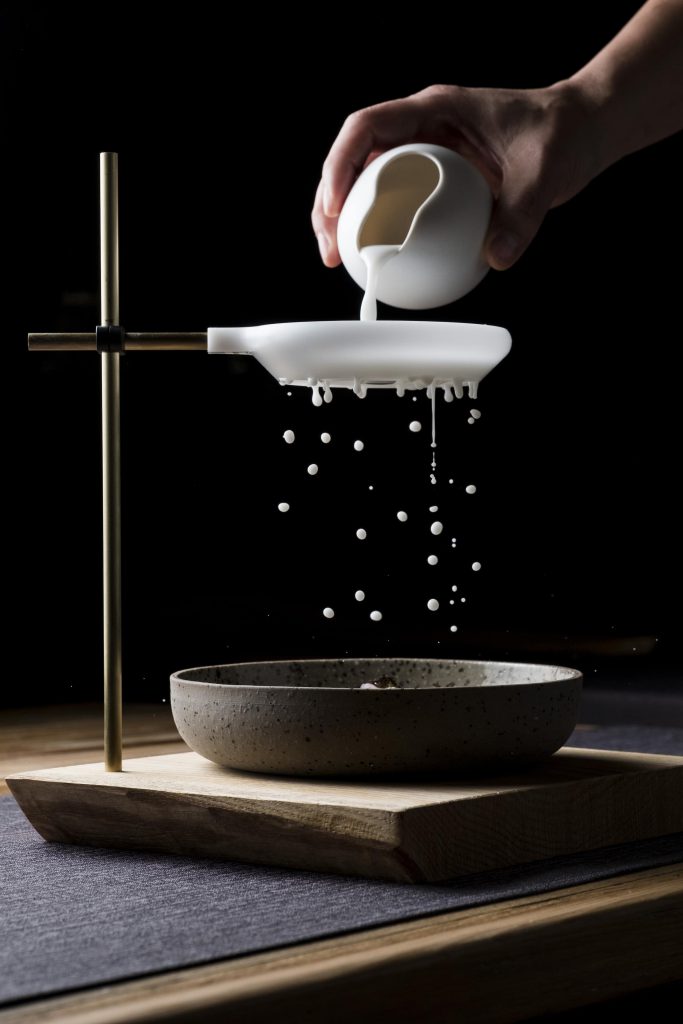
The intention behind “human touch”
At secca, their work combines traditional techniques that have been passed on through generations and modern technologies, while adding various original interpretations to create the final product.
In one corner of their office, they have an electric kiln and a 3D laser cutting machine. Their shelves are lined up with various prototypes and the room has the definite air of a workshop.
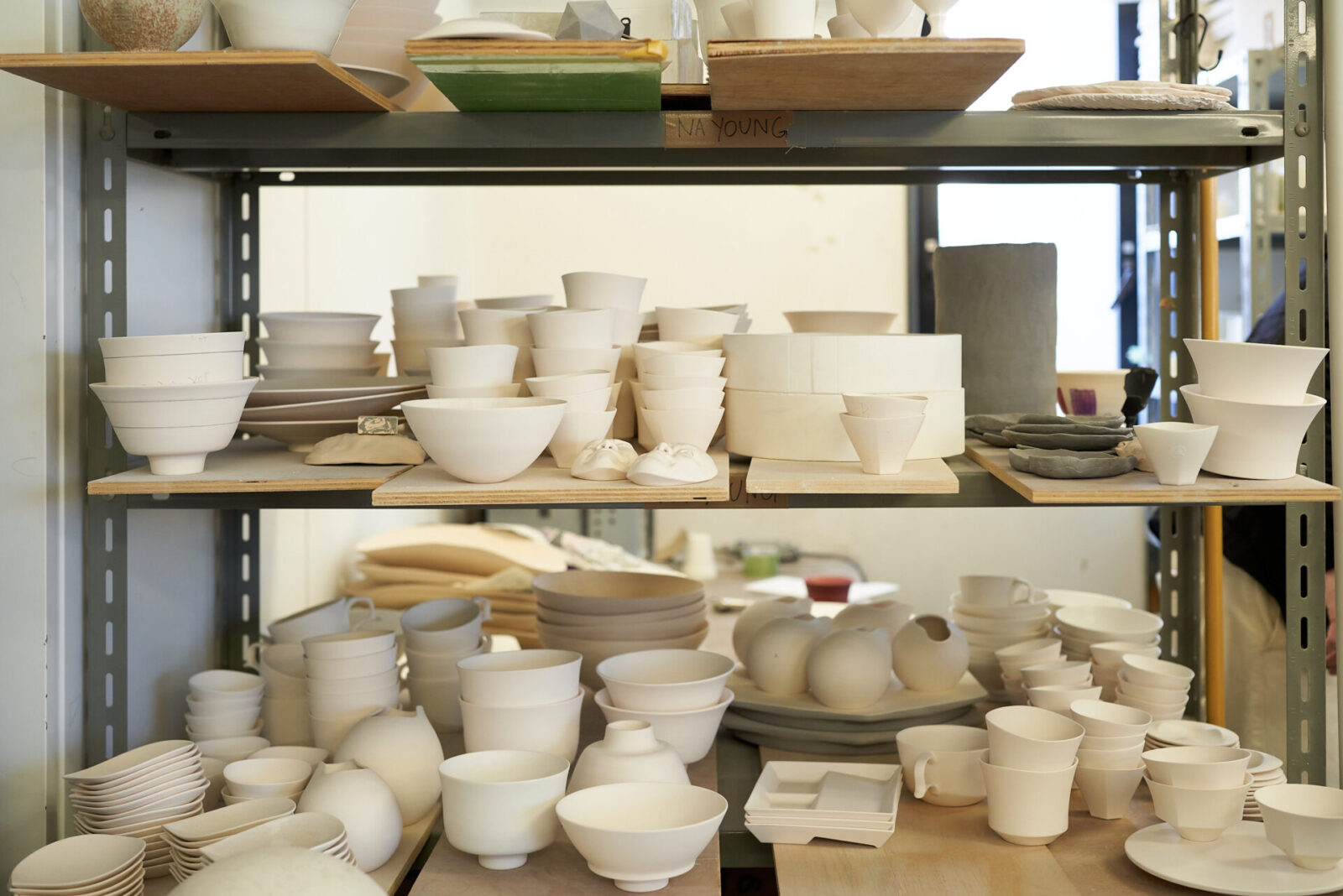
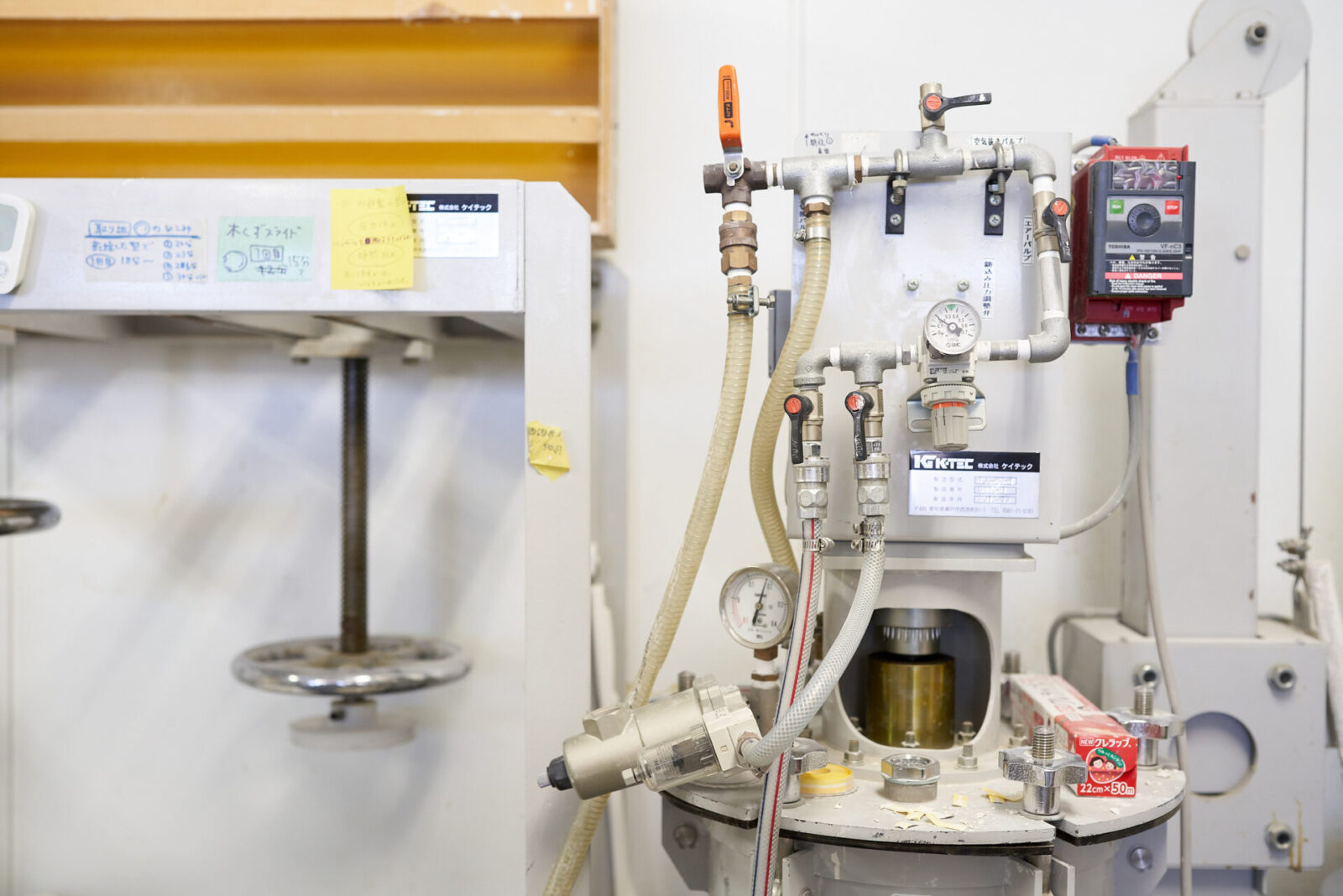
Yanai says, “Creating products just as they are ordered can be done by others. We not only design, but we also propose the use of different materials as well. In order to turn the desired experience into a product, we take part in all the processes, from making prototypes until the final product.”
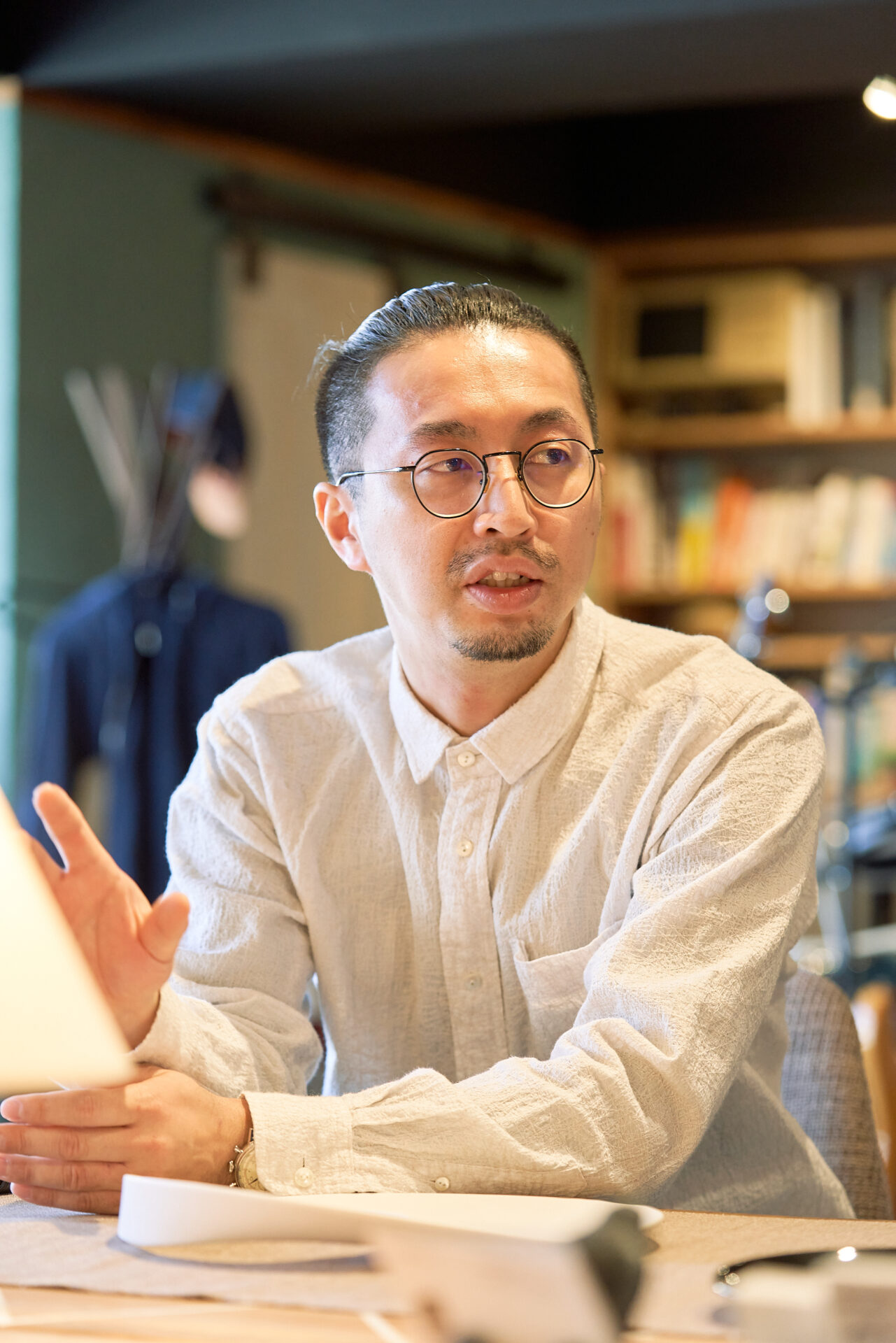
“When one thinks of product design, some people may imagine the drawing of mathematical lines using CAD. However, we focus on size, curves, and texture that instinctively give people comfort.”
“The human hand itself has not changed for tens of thousands of years. We study the workings of mankind over the years and think about what forms best suit people’s needs. The repeated adjustments and changes we make to the product are done by hand.”
At secca, although the design is done digitally, it is completely up to the human hand to put the product into form. In an age where efficiency is often prioritized, secca intentionally adds the process of human touch wherever possible.
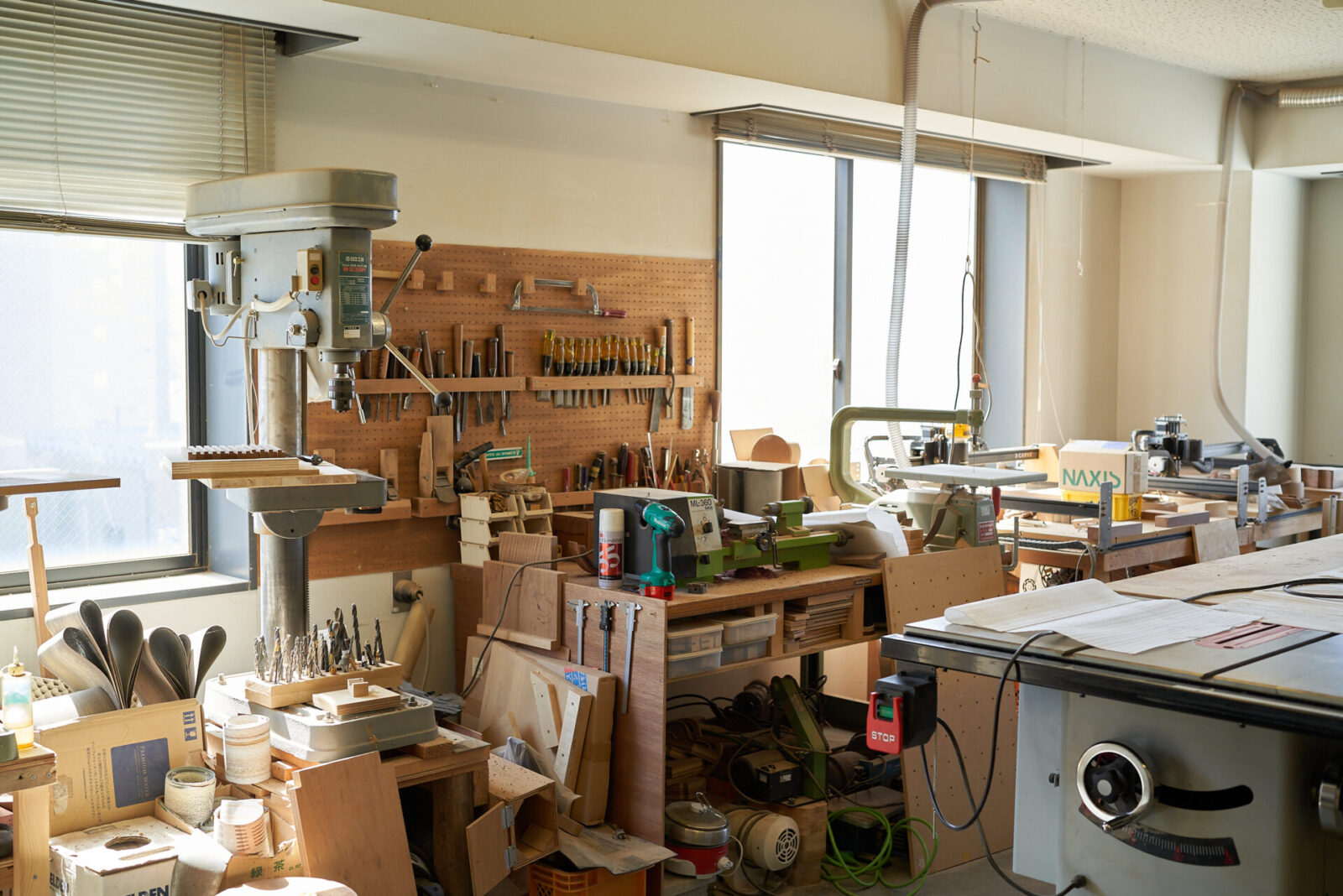
Why create?
“The age of mindless production is over.” During the interview, these words came up often. Perhaps the reason they believe so is because they both experienced working as in-house designers at manufacturers.
Uemachi is from Gifu Prefecture, and Yanai is from Shimane Prefecture. Neither are originally from Kanazawa. They both studied product design at Kanazawa College of Art and upon graduation Uemachi worked for a camera manufacturer and Yanai at an audio equipment manufacturer.
The experience of working first-hand in an environment of mass production raised questions in their minds about the current high-speed high-consumption manufacturing industry and that has had a big impact on secca’s approach to production.
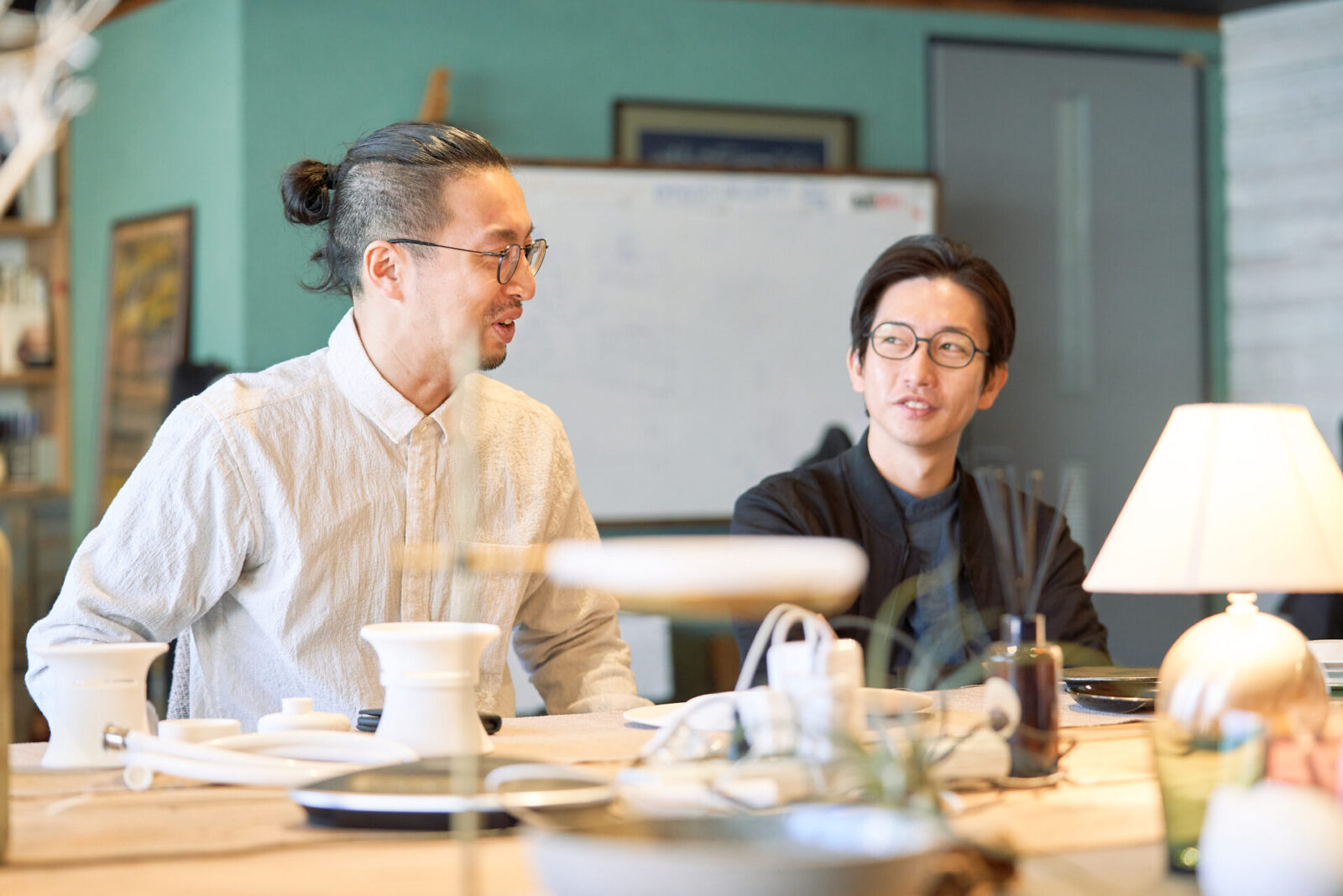
Uemachi explains, “Why create the product? We spend over half the time of the planning phase debating this question. When our discussions lead to a clear answer to the question of ‘why,’ naturally, we begin to see ‘’how’ to approach production. That is why this process is so important to us.”
At secca, there is no client and vendor relationship. Both sides work as equals to share their visions of the future and create something new.
The new value of plastic resin
In 2020, secca worked with Ishikawa Jushi, a resin maker in Ishikawa Prefecture, on a tableware series called ARAS. This product was made as a result of deeply questioning the “why” in production.

Uemachi says, “Resin products such as plastic are often seen as bad for the environment, but in reality, our lives depend widely on various types of plastic. The problem is not only the plastic material itself, but the way it is used.”
“Rather than treating it as a single use product, if we can utilize it’s durability and lightness and create something that can be used for a long time, new value can be found in resin products.” The ARAS project was founded on such a basis.

For plastic plates and cutlery, they focused on the design and material to create a luxurious texture that is comparable in quality to ceramics or glass. Their goal was to create a product that could line up next to other materials and be a new and attractive selection. In order to make it reusable, they mixed resin and glass to increase durability. They left a big impression by including a “lifetime guarantee” which provides unlimited replacement if the product is damaged.
The fundamental question of “why create?,” which determines the future of manufacturers, helped to bring new value to the material, resin. The ARAS series raises questions about how we are to approach the future and changes the mindset of consumers.
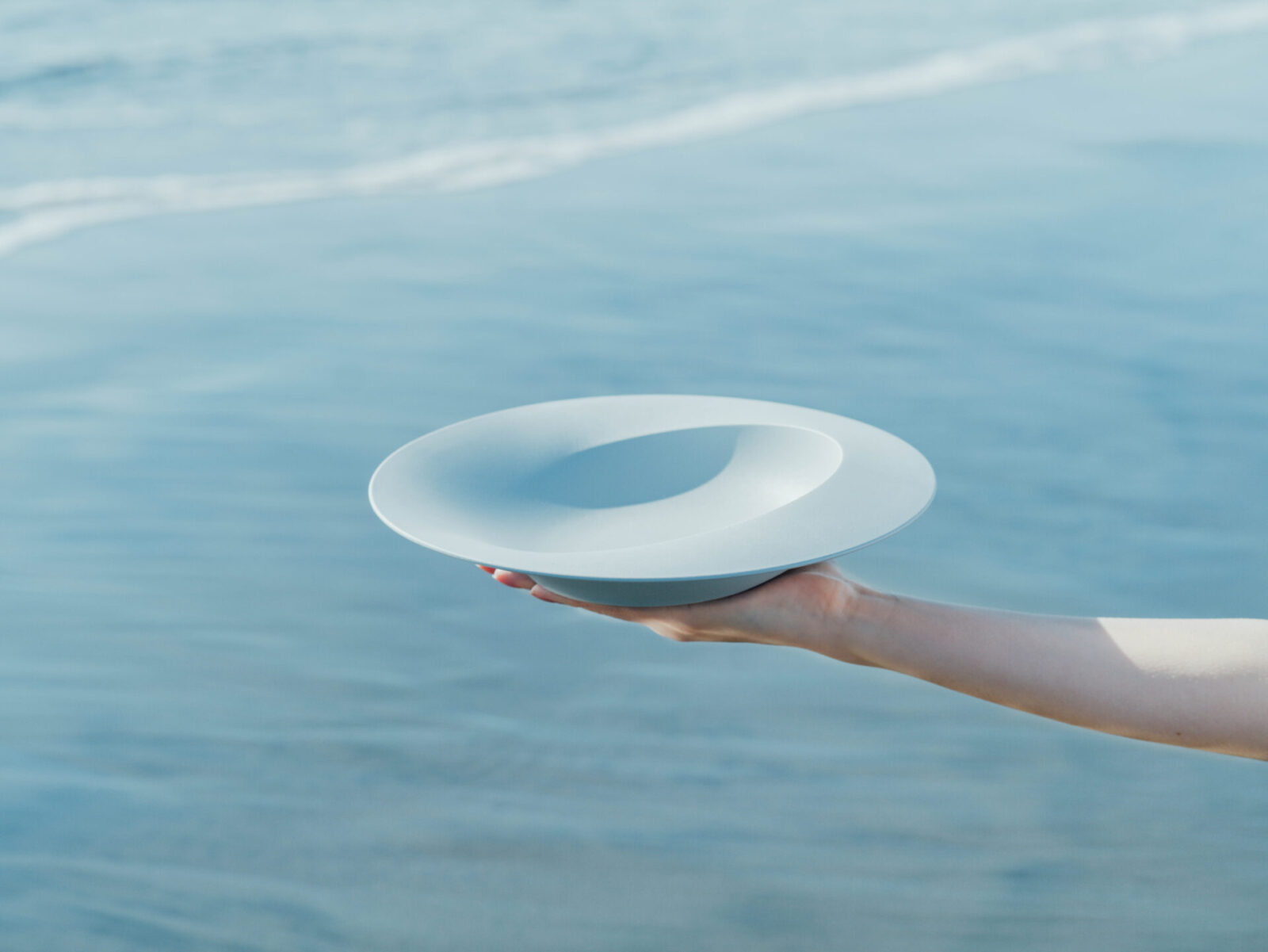
Art that takes back time
In addition to product design, secca also works on art, such as sculptures, to decorate spaces. They pick up on current trends and find ways to provide an experience through objects.
For example, their piece called Hakusan-kiu (Rain of Joy on Hakusan) (2019), which was placed inside the restaurant of the Agora Kanazawa Hotel, represents secca’s unique approach and method to creating pieces.
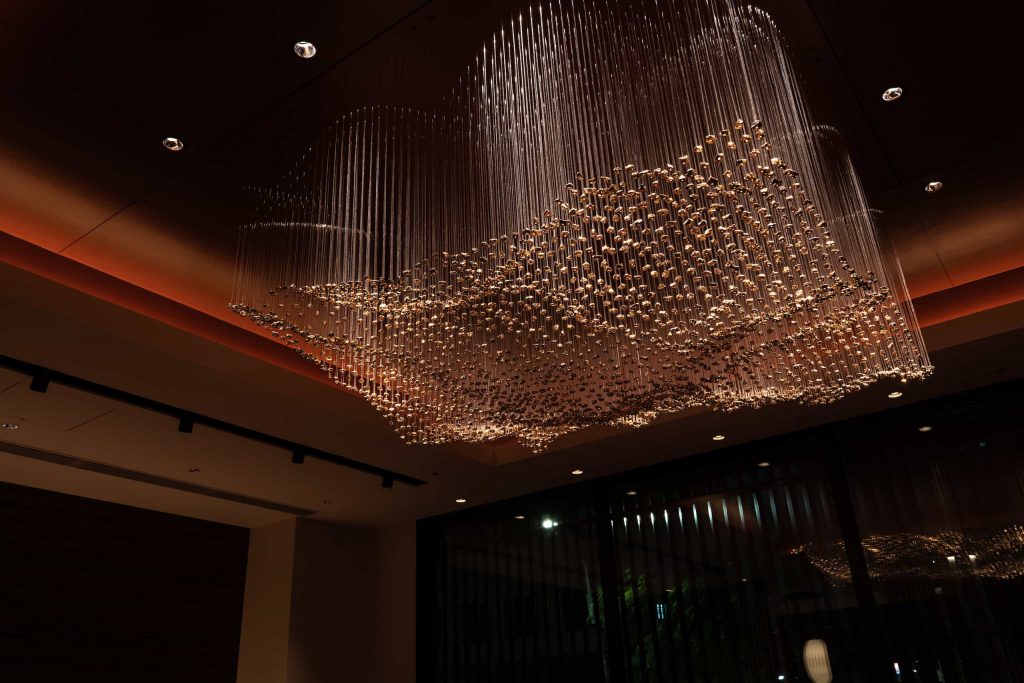
Hakusan is a mountain range that expands across three prefectures, Ishikawa, Fukui, and Gifu. It is considered sacred to the people of Kanazawa because it is the source of their water supply.
The piece represents the “shining mountain surface” after “a joyful rainfall.” They extracted topographical data of Hakusan which provided information on the elevational differences on the mountain. Using 3,136 hand-painted gold Hanasaka ceramic stones, they recreated the shape of the mountain surface.
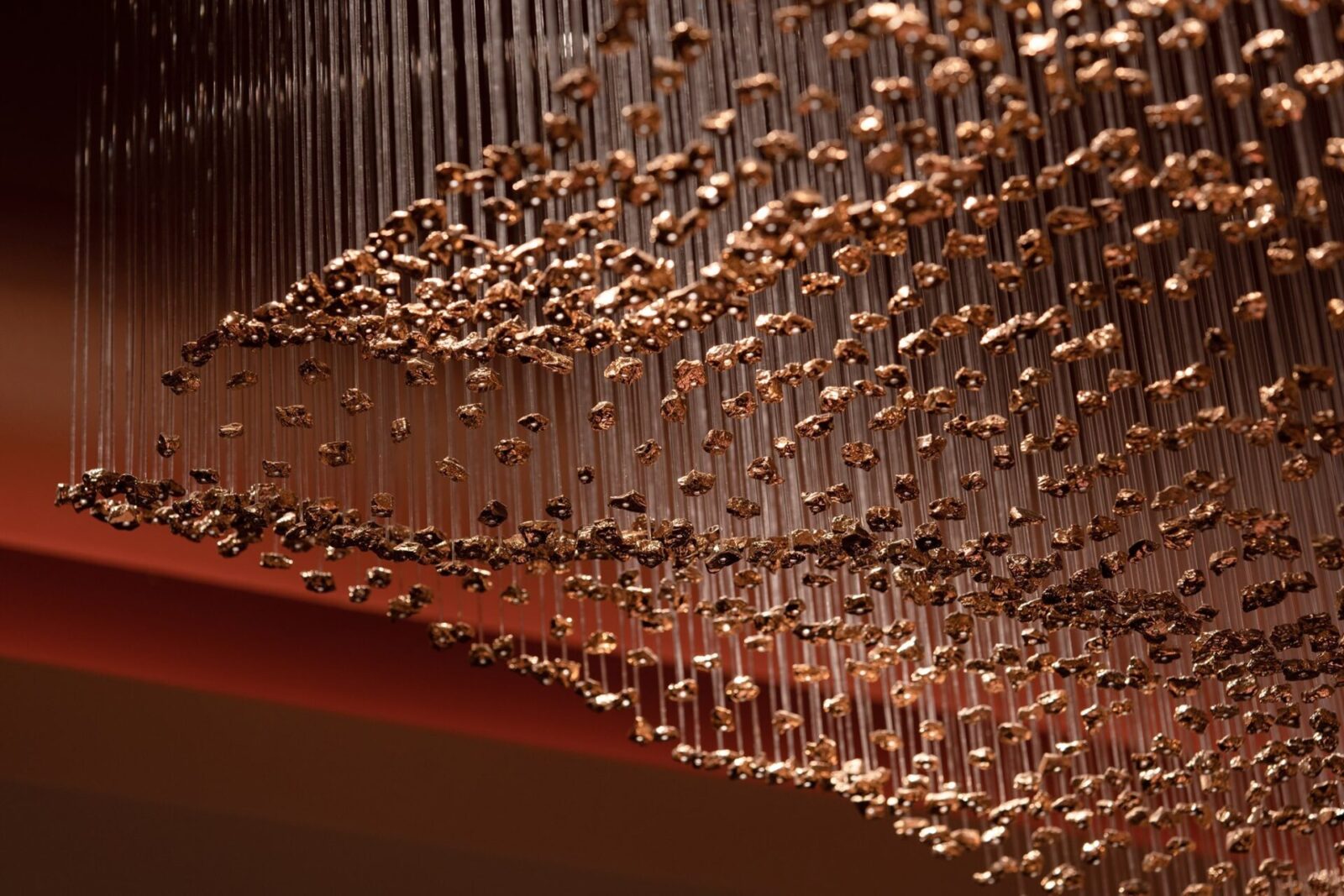
Uemachi explains, “There are ways to create something more efficiently, but I think it is our style to go out of our way to express ourselves with hands-on processes.”
“People find value in things that people spend time and labour on. I would like to create an experience where one could look at a piece for hours and imagine the time and effort it took in creating it.”
The landscape and nature expressed through unique individual filters creates the overwhelming beauty of hand crafted art. In an age where everything moves too quickly, the process to create this art was like a way of taking back time.
The meaning of tradition
They say that being in Kanazawa plays an important role in why secca is able to continuously take on new challenges.
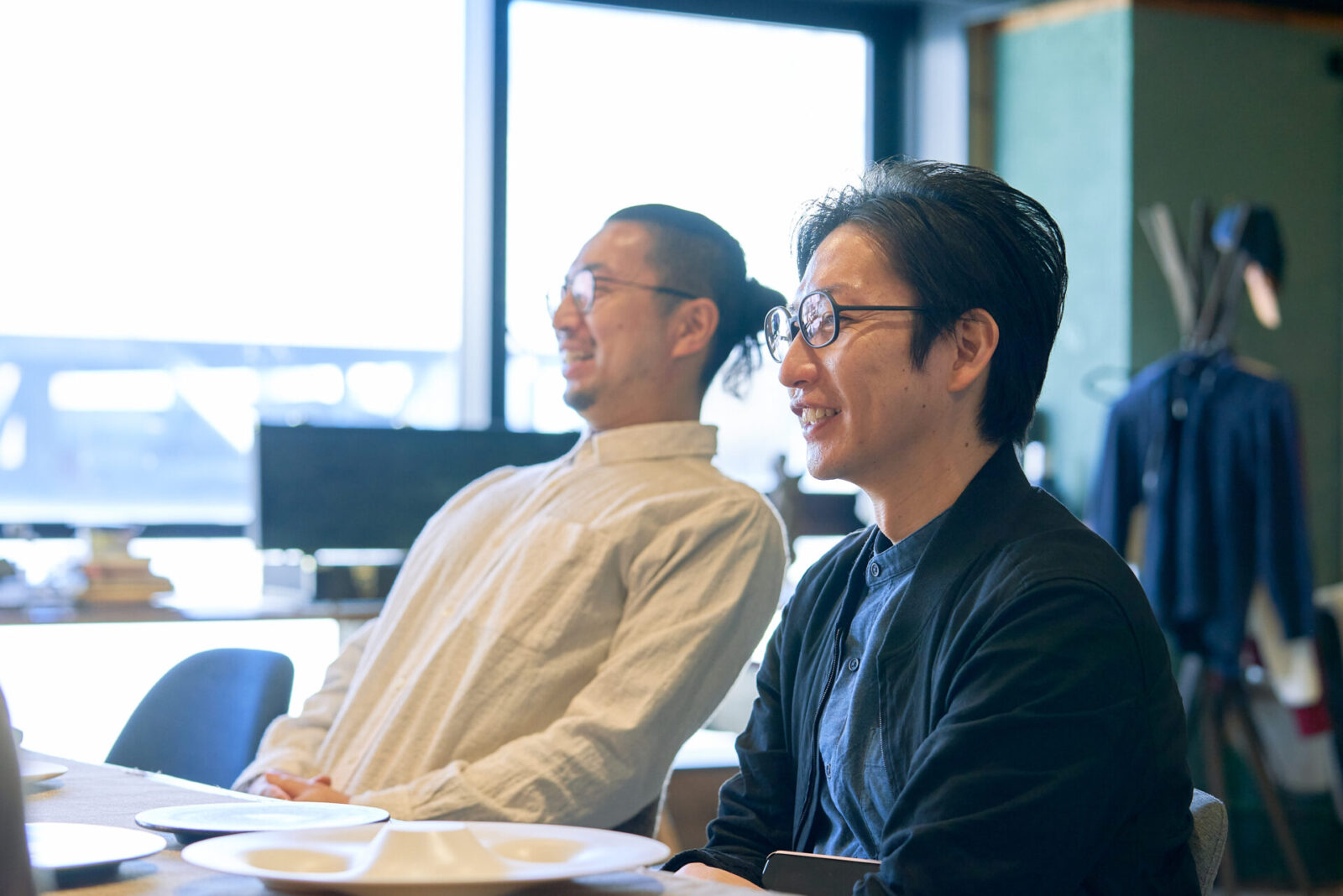
“The nice thing about Kanazawa is that there is a foundation here to take on new challenges. The local government and businesses encourage us to try new things, even though we are not originally from this region. It’s nice to know that there is a culture here that encourages progress and interesting challenges that in turn benefit the region.”
In the Edo period (1603-1868), the Maeda family (lords of the Kaga domain) promoted cultural incentives in Kanazawa, which attracted manufacturing professionals from all over Japan. The city as a whole was involved in the production of goods, which may have contributed to raising the bar of traditional crafts and cuisine to an artistic level.
“We study history and traditional craftsmanship all the time, but we don’t necessarily believe that sticking to traditional methods is the only way to preserve the past. There is a saying, ‘Tradition is the continuum of innovation.’ I believe that the true meaning of tradition is to continue evolving.”
As secca looks to the past, present, future, and the various flows of time, they create new scenes through their creations.
At secca, they are in the midst of creating new “traditional” crafts that will be passed on into the future.
Photos: Umihiko Eto
Translation: Sophia Swanson
Local writer / editor. Born in Osaka, currently living in Fukuoka. Worked in advertising at Recruit Co. before becoming freelance.
Travels around Japan interviewing and writing about regional communities, crafts, and relocating. Involved in various regional projects and is a voice of the local people and their work. Author of Hanro no Kyoukasho(EXS Inc.)
Editor and creator of the future through words. Former associate editor of Huffington Post Japan. Became independent after working for a publishing company and overseas news media. Assists in communications for corporates and various projects. Born in Gifu, loves cats.
